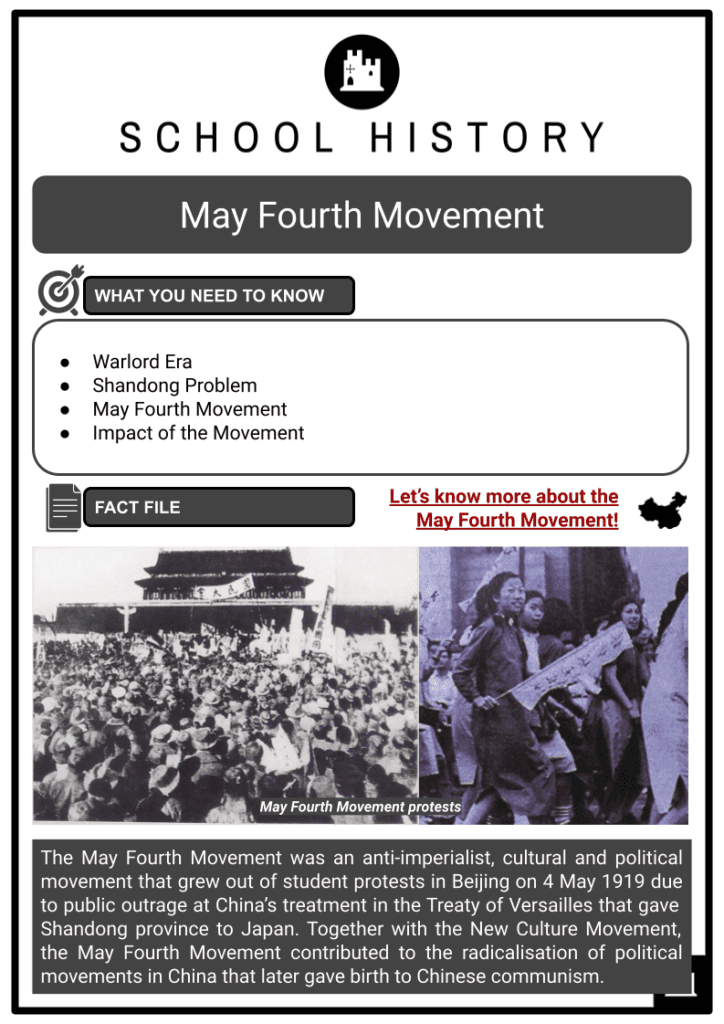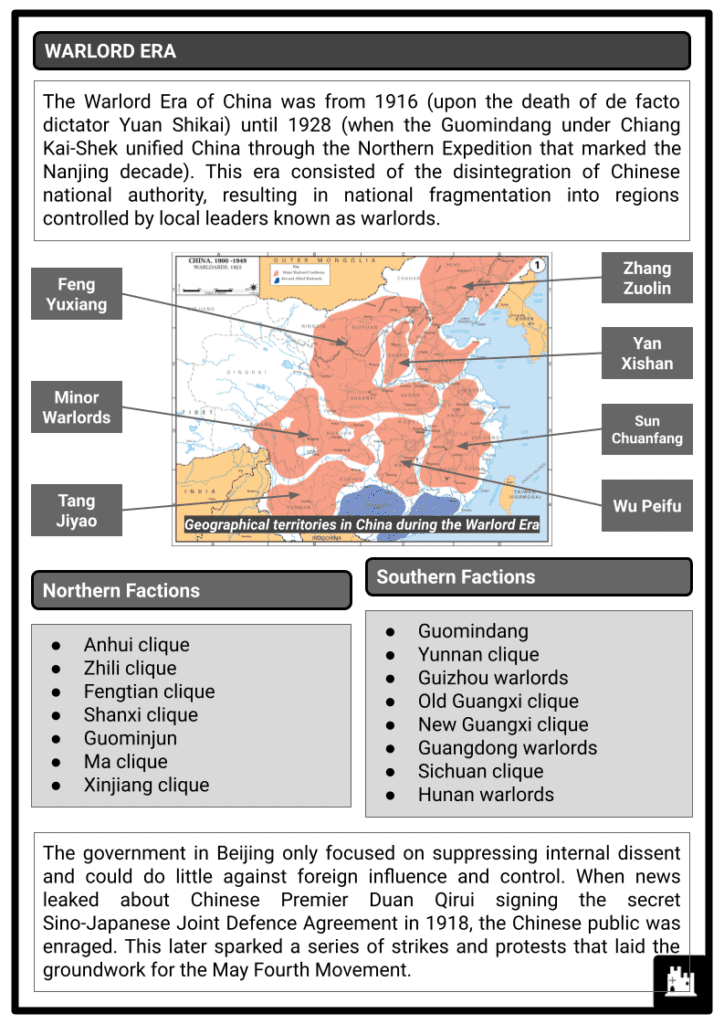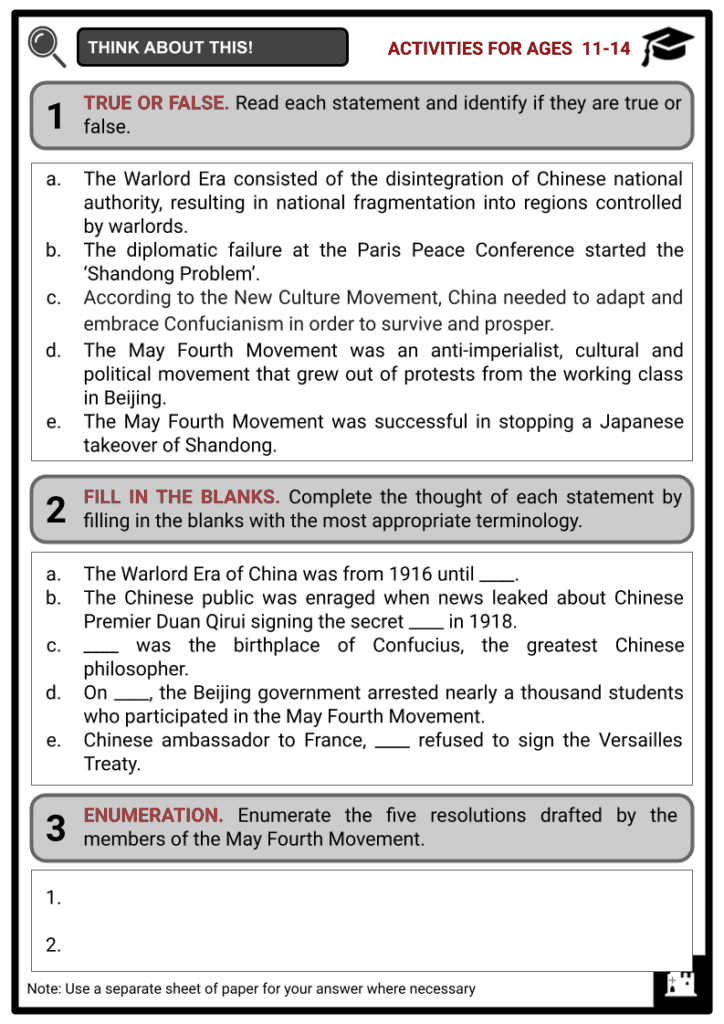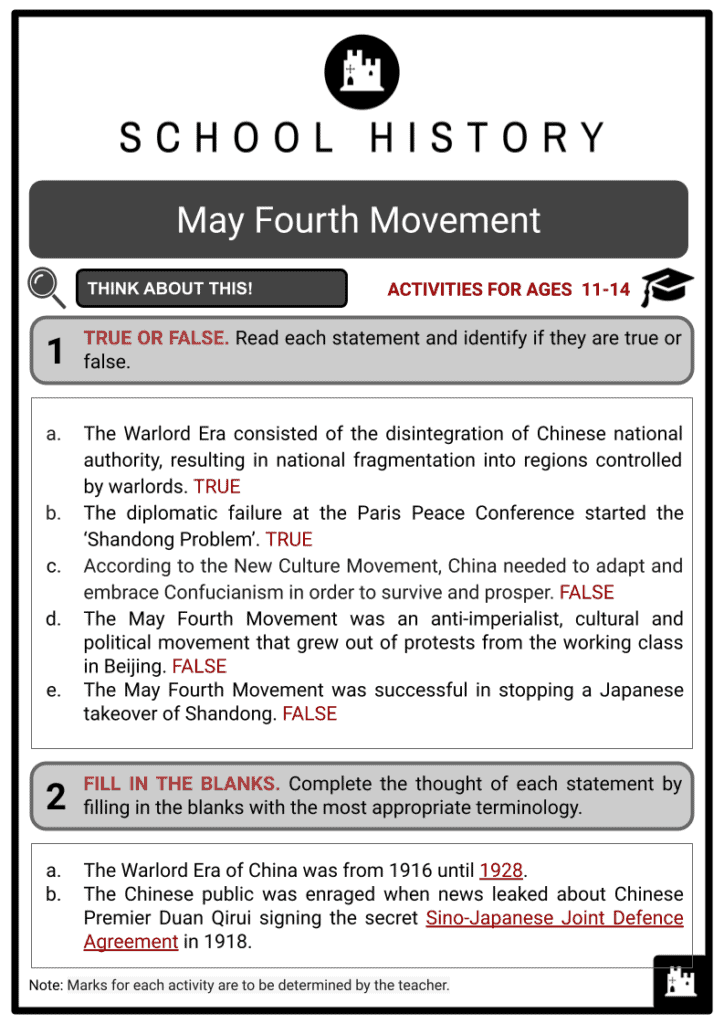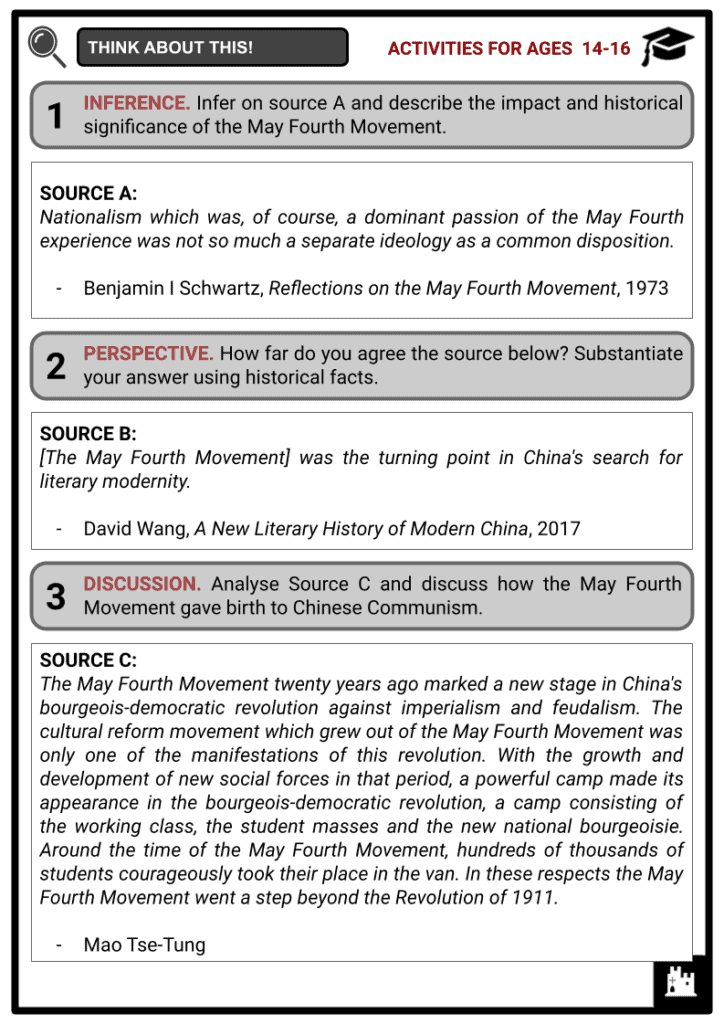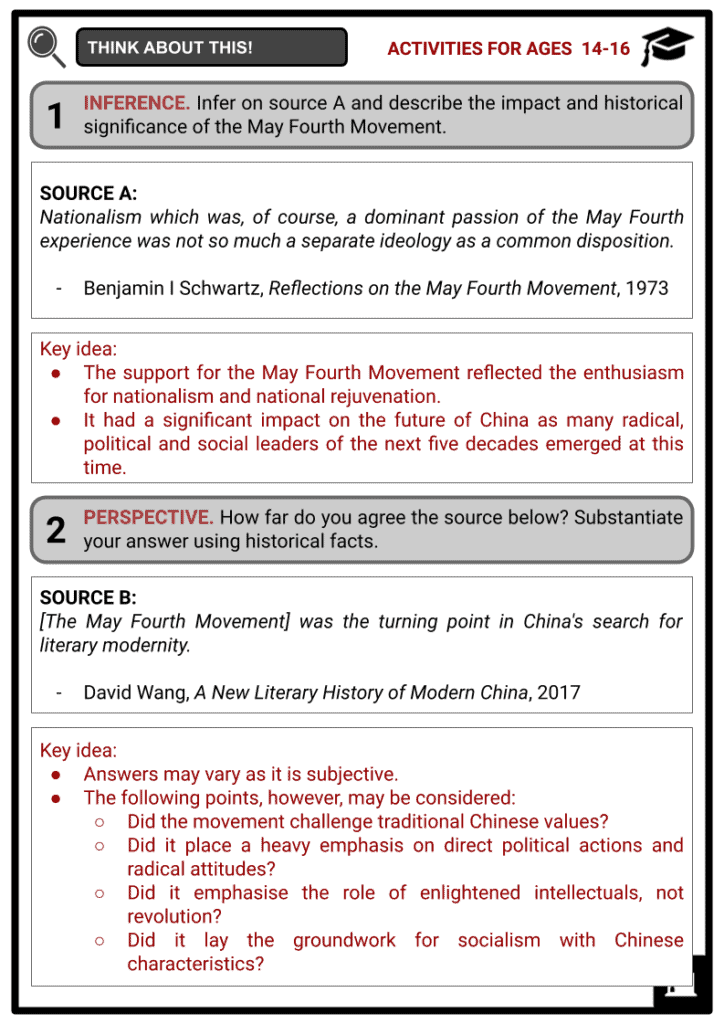May Fourth Movement Worksheets
Do you want to save dozens of hours in time? Get your evenings and weekends back? Be able to teach about the May Fourth Movement to your students?
Our worksheet bundle includes a fact file and printable worksheets and student activities. Perfect for both the classroom and homeschooling!
Summary
- Warlord Era
- Shandong Problem
- May Fourth Movement
- Impact of the Movement
Key Facts And Information
Let’s find out more about the May Fourth Movement!
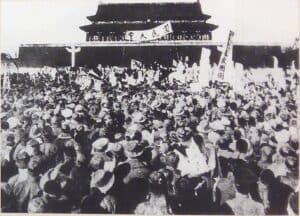
The May Fourth Movement was an anti-imperialist, cultural and political movement that grew out of student protests in Beijing on 4 May 1919 due to public outrage at China’s treatment in the Treaty of Versailles that gave Shandong province to Japan. Together with the New Culture Movement, the May Fourth Movement contributed to the radicalisation of political movements in China that later gave birth to Chinese communism.
WARLORD ERA
- The Warlord Era of China was from 1916 (upon the death of de facto dictator Yuan Shikai) until 1928 (when the Guomindang under Chiang Kai-Shek unified China through the Northern Expedition that marked the Nanjing decade). This era consisted of the disintegration of Chinese national authority, resulting in national fragmentation into regions controlled by local leaders known as warlords.
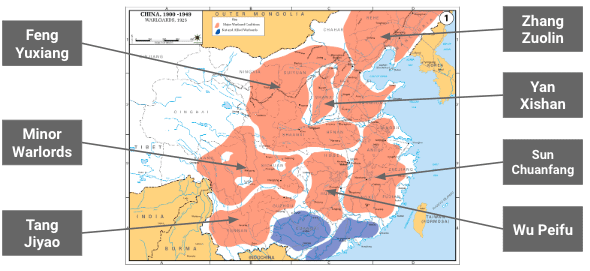
Geographical territories in China during the Warlord Era
Northern Factions
- Anhui clique
- Zhili clique
- Fengtian clique
- Shanxi clique
- Guominjun
- Ma clique
- Xinjiang clique
Southern Factions
- Guomindang
- Yunnan clique
- Guizhou warlords
- Old Guangxi clique
- New Guangxi clique
- Guangdong warlords
- Sichuan clique
- Hunan warlords
The government in Beijing only focused on suppressing internal dissent and could do little against foreign influence and control. When news leaked about Chinese Premier Duan Qirui signing the secret Sino-Japanese Joint Defence Agreement in 1918, the Chinese public was enraged. This later sparked a series of strikes and protests that laid the groundwork for the May Fourth Movement.
Effects of the Warlord Era
- China remained divisive with no warlord powerful and ambitious enough to unite the country
- China became weak and disunited politically
- Results were terrible for commoners and peasants living under military rule
- There was constant need of men to fight the wars between the warlords for power and wealth
- Overtaxed populace
- Common people suffered greatly from hunger and brutal punishments
- Strengthened foreign influence
NEW CULTURE MOVEMENT
- The failure of the early republic of China and the impact of the Warlord Era led intellectuals to examine the past and present in China. The New Culture Movement was at the forefront of the thinking that Confucianism and classical philosophy had little relevance or value in 20th-century China.
- According to the New Culture Movement, China needed to adapt and embrace modernism, liberalism, democracy and science in order to survive and prosper. To promote their ideals, the movement attacked Confucianism and introduced Western social and political concepts and values, mainly:
- Democracy
- Republicanism
- Self-determination
- Equality
- Individual liberties
- Advocates of the New Culture Movement believed that there could never be a democratic China while political authority was reinforced by Confucian teachings, traditions consistently blocked progress, and patriarchal family structures hindered women’s rights.
SHANDONG PROBLEM
- During World War I, while 140,000 Chinese labourers were being sent to the Western Front as part of the Chinese Labour Corps, rights to the German territories in Shandong Province were awarded to Japan under the Versailles Treaty of April 1919. Representatives of the Chinese government requested the following:
- Cancellation of the ‘Twenty-One Demands’ with the Japanese
- Abolition of all privileges of foreign powers in China
- Return to China of the territory and rights of Shandong taken by Japan from Germany during the war
- Western allies who dominated the meeting at Versailles paid little attention to the requests of China as they focused more on punishing Germany. The diplomatic failure at the Paris Peace Conference started the ‘Shandong Problem’.
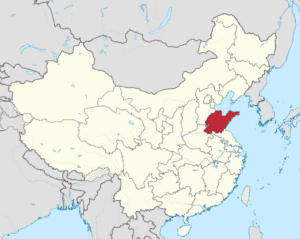
Map showing the location of Shandong Province - Shandong was the birthplace of Confucius, the greatest Chinese philosopher. Chinese ambassador to France, Wellington Koo, even argued at the conference that China could no more relinquish Shandong than Christians could concede Jerusalem. Despite the arguments, Japan prevailed and Koo refused to sign the Versailles Treaty. Chinese outrage over Shandong eventually led to the May Fourth Movement.
MAY FOURTH MOVEMENT
- After WWI, a major event called the May Fourth Movement emerged. It was an anti-imperialist, cultural and political movement that grew out of student protests in Beijing on 4 May 1919.
Five Resolutions
- To oppose the granting of Shandong to the Japanese under former German concessions
- To draw and increase awareness of China’s precarious position to the masses in China
- To recommend a large-scale gathering in Beijing
- To promote the creation of a Beijing student union
- To hold a demonstration that afternoon in protest at the terms of the Treaty of Versailles
- After drafting five resolutions on the morning of 4 May, approximately 3,000 students from different local universities marched from many points to gather in front of Tiananmen in the afternoon. The student protests ignited nationwide protests and a surge in nationalism. The participants of the movement were students in Paris and Beijing.
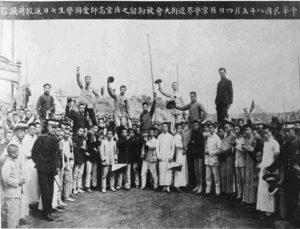
May Fourth Movement - They joined forces to protest out on the streets to express their dissatisfaction with the government. Later on, some students from Shanghai and Guangzhou also joined the protest, gradually forming a wave of mass student strikes across China.
- On 3 June 1919, the Beijing government arrested nearly a thousand students. This did not stop the patriotic student movement, however, as the whole Chinese population was angered, leading to a greater revolutionary storm. The Chinese working class entered the movement and went on strike to show support to the students. The centre of the strikes then shifted from Beijing to Shanghai and the working class became the main force of the movement.
IMPACT
- The support from the working class and the increasing number of participants in the movement led to a national strike that paralysed China’s economy and threatened the Beijing government. The support for the May Fourth Movement reflected the enthusiasm for nationalism and national rejuvenation.
- Though the movement consequently achieved many of its objectives, it still failed to stop the Japanese takeover of Shandong. Nonetheless, it had a significant impact on the future of China as many radical, political and social leaders of the next five decades emerged at this time.
- During the movement, communist ideas grew from a group of radical intellectuals consisting of Chen Tanqiu, Zhou Enlai and Chen Duxiu, among others. They would later on mobilise peasants and workers in the Communist Party that would solidify the success of the Communist Revolution.
- The promotion of the Sinicisation of Marxism provided the birth of socialism with Chinese characteristics.
Image Sources
- https://upload.wikimedia.org/wikipedia/commons/0/00/Chinese_protestors_march_against_the_Treaty_of_Versailles_%28May_4%2C_1919%29.jpg
- https://upload.wikimedia.org/wikipedia/commons/a/a5/Map_of_major_Chinese_warlord_coalitions_1925.png
- https://upload.wikimedia.org/wikipedia/commons/thumb/d/d6/Shandong_in_China_%28%2Ball_claims_hatched%29.svg/1024px-Shandong_in_China_%28%2Ball_claims_hatched%29.svg.png
- https://upload.wikimedia.org/wikipedia/commons/thumb/1/1c/May_Fourth_Movement_students.jpg/1280px-May_Fourth_Movement_students.jpg

